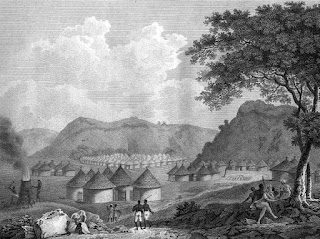European geologists were baffled by the rivers of Africa.
They were puzzled by the sources of the Niger and Congo and even thought that the two rivers were one. Expeditions were sent out from the capitols of the empires. Mongo Park was one of those explorers. The Scot had reached the Niger in the end of the 18th Century, traveling east to Bamako before turning back to the Atlantic.
His book TRAVELS IN CENTRAL AFRICA was a huge success.
Eight years later Mungo Park struck out for Africa.
Europe wanted to solve the mystery.
It was no mystery for the inhabitants of the Niger flood plain.
The river came from one way and wen the other.
It was only a problem when the Niger overran its banks.
The the river went in all directions.
The expedition was beset by disease.
Eleven out of the thirty-nine Europeans arrived at the banks of the Niger.
They continued down the river on a modified canoe.
The men died one by one.
Park’s last letter stated, “I shall set sail for the east with the fixed resolution to discover the termination of the Niger or perish in the attempt. Though all the Europeans who are with me should die, and though I were myself half dead, I would still persevere, and if I could not succeed in the object of my journey, I would at least die on the Niger.”
The Africans frequently attacked the travelers.
The expedition ended at the Bussa Rapids.
The natives killed everyone.
THE STRONG BROWN GOD: THE STORY OF THE NIGER RIVER By Sanche de Gramont contains an excellent account of Mungo Park’s exploration as does T C Boyle’s WATER MUSIC.
The Niger still rolls to the sea.
As strong as ever.
Brown as mud.


